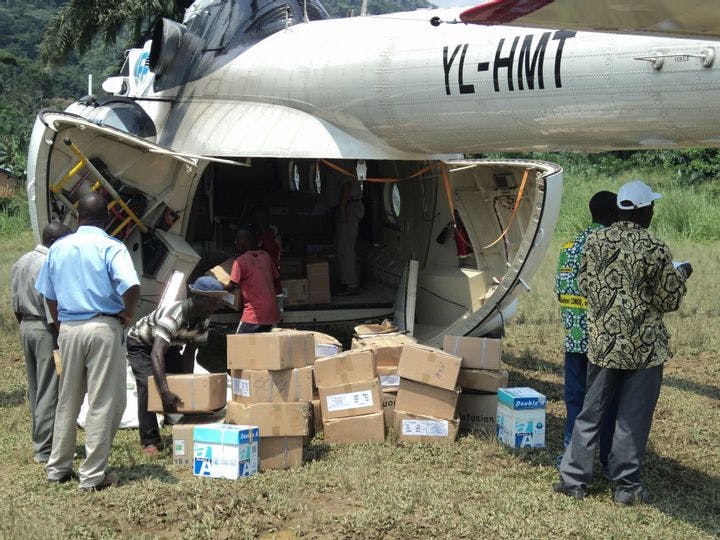Winter 2009
Deadly Networks
– Allison Herling Ruark and Daniel Halperin
Allison Herling Ruark and Daniel Halperin on AIDS in Africa.
In Unimagined Communities, anthropologist Robert Thornton seeks to explain the sharply divergent trajectories of HIV infection in two African countries: Uganda, where new HIV infections plummeted in the late 1980s and 1990s, and South Africa, where they skyrocketed during the same period. Rather than approach this complex question in the usual epidemiological manner, Thornton argues that the structure of the epidemic has to do primarily with social meaning and culture. Sexual relationships, he says, place people within an invisible “unimagined community.” Because a sexual network links people not only to their own sexual partners but also to their partners’ partners, such networks can become what noted AIDS writer Helen Epstein has referred to as a “superhighway” for the spread of HIV.
Uganda has experienced the most dramatic decrease in HIV infection of any nation in the world. In the early 1990s, approximately 15 percent of the adult population was infected; today, that figure is only about six percent. Thornton argues, as have many others, that the nation’s political leadership and the openness and collective action of Ugandans themselves were important factors in the decline of this deadly epidemic. Ugandans treated HIV as a “normal illness,” established a “native category” for it (naming it “slim”), and used existing cultural structures such as religious institutions and traditional healers to respond to the threat. Uganda’s now famous “zero grazing” slogan was an unmistakable message to keep sex within the home, and helped reduce the extramarital sexual partnerships that had pushed infection to very high levels.
In contrast, South Africa’s response to its AIDS crisis is widely recognized as disastrous. At least one in six of all HIV-positive people in the world live in this country of some 48 million. Many South Africans saw AIDS as an invention of the racist West and responded to it with stigma, denial, and obfuscation. Instead of treating AIDS as a communicable disease (and providing treatment), the South African government typically labeled it a social problem, the product of poverty and disenfranchisement. This attitude inhibited frank discussion of the sexual behaviors that spread the disease. While South Africa is awash in information about HIV, this knowledge has done little to transform sexual behaviors in ways that would slow the spread of the virus.
Thornton is most persuasive when describing how these two very different sociocultural environments determined the spread of HIV in Uganda and South Africa. While the role of sexual networks in spreading HIV is well understood, the public-health community often gives insufficient attention to the cultural meanings and motivations behind sexual behaviors. Thornton situates his discussions of the HIV epidemic within sexual culture, political climates, land rights, kinship and marriage customs, patterns of travel and migration, and the epistemology and meaning of sex and disease. For example, he argues that in Uganda kin groups have significant power to control sexual behavior and sexual access (such as through marriage) among their members, who depend for their livelihood on land controlled by the kin group. In contrast, most South Africans live in urban areas, few own or inherit land, and kin groups are weak and exert little influence.
Yet Thornton is clearly out of his depth when he attempts to describe the epidemiology of sexual networks, a subject on which sophisticated modeling and research are being brought to bear, and his rejection of seminal studies on the decline of HIV in Uganda is puzzling and misguided. He fails to emphasize the well-established fact that sexual behaviors did change significantly in Uganda, and have not in South Africa.
In addition to numerous publications that have documented sexual behavior changes in Uganda, as early as 2003 a study for the U.S. Agency for International Development, coauthored by one of the writers of this review (Halperin), emphasized the role that reductions in the number of sexual partners had in the decline in Uganda’s HIV infection rate. (Oddly, Thornton describes the impetus for this report as a “hidden agenda” to push abstinence.) In contrast, recent national surveys suggest an increase in the proportion of South African men having multiple partners. Thornton’s assertion that “sexual behavior has changed by similar amounts in both countries” is bizarrely incorrect.
Certainly, sexual behaviors are rooted in complex relationships, motives, and forces that extend beyond the individual. Yet the prescription for reducing the sexual transmission of HIV in these epidemics is clear: Sexual networks must be broken up, primarily through reductions in number of sexual partners. The declines in HIV infection not only in Uganda but also more recently in countries such as Kenya, Zimbabwe, Ethiopia, and Malawi suggest that it is possible to promote such changes successfully. In fact, when Thornton proposes a “new approach to prevention” in the final pages of the book, he stresses the need to reduce the number of sexual partners. While hardly novel, this recommendation may be the most valuable message of his book.
* * *
Allison Herling Ruark is a research fellow at the AIDS Prevention Research Project at the Harvard Center for Population and Development Studies. Daniel Halperin is a lecturer on global health and a senior research scientist at the Harvard School of Public Health, and has written on HIV/AIDS and other global health issues for peer-reviewed journals including The Lancet, AIDS, and Science.
Reviewed: Unimagined Communities: Sex, Networks, and AIDS in Uganda and South Africa by Robert Thornton, University of California Press, 304 pp, 2008.
Photo courtesy of the European Commission's Humanitarian Aid and Civil Protection Department
